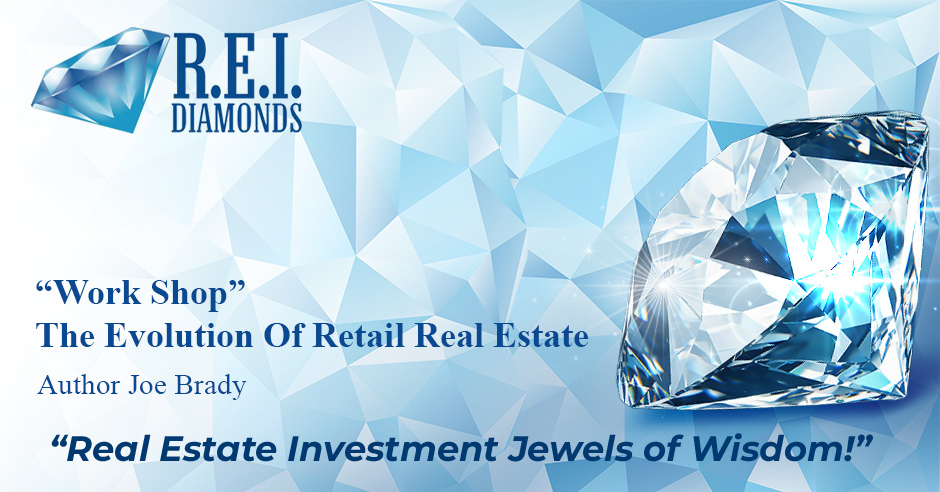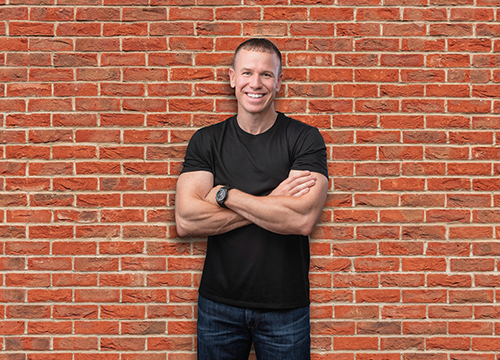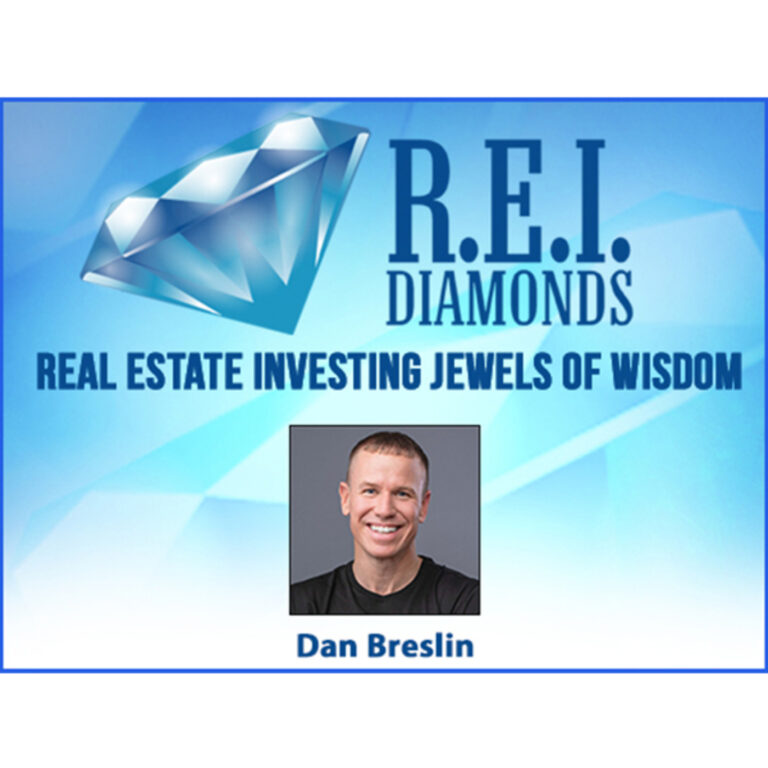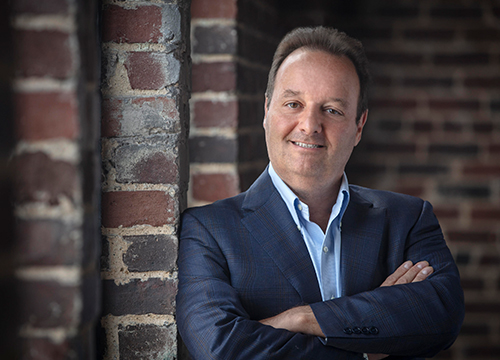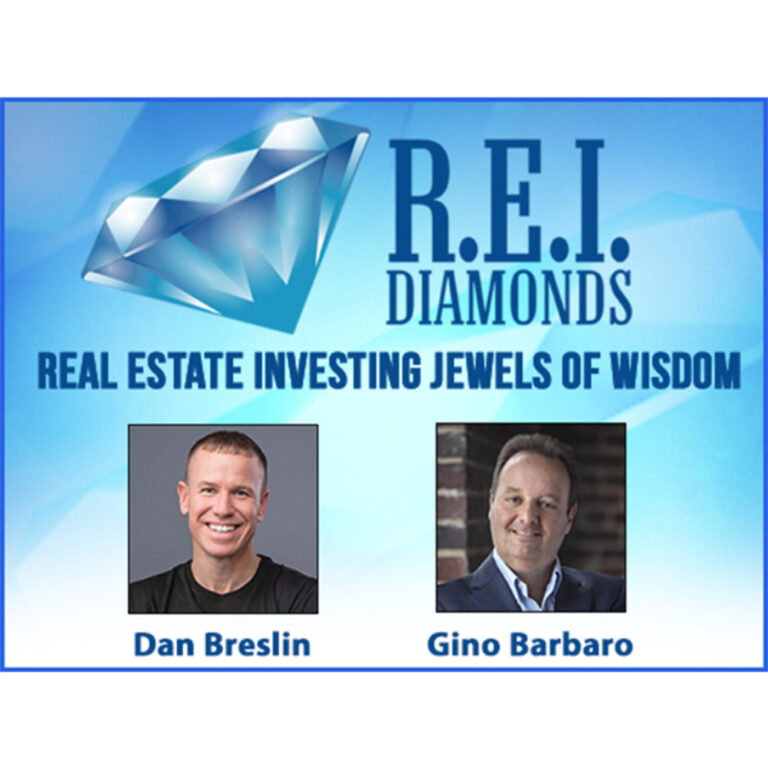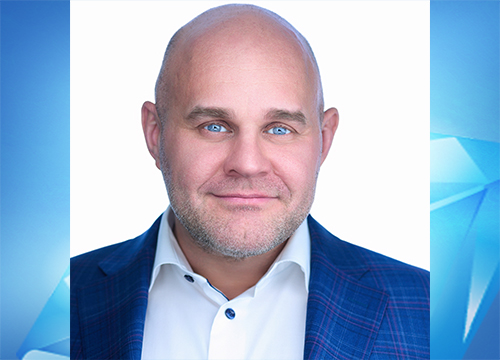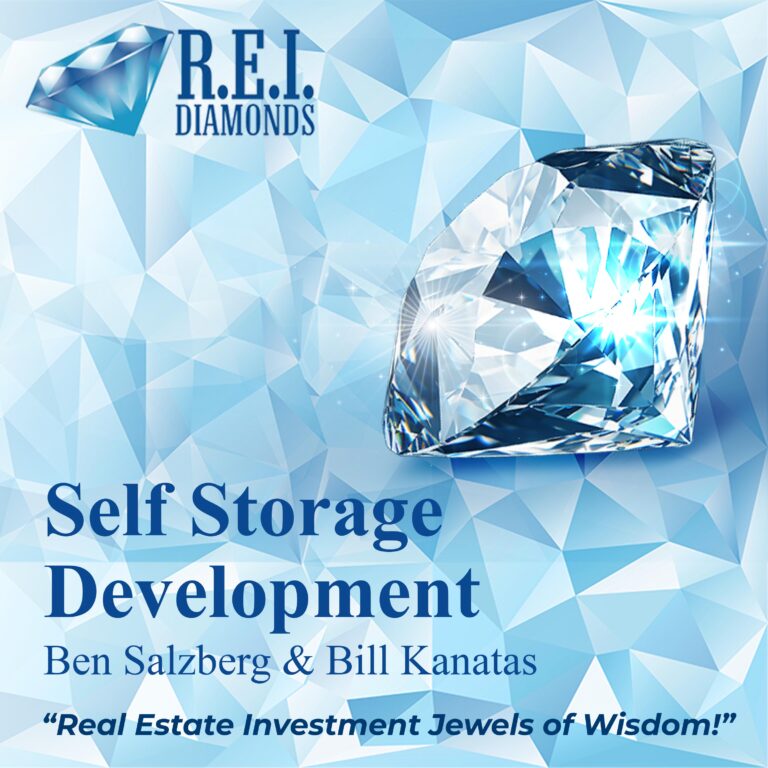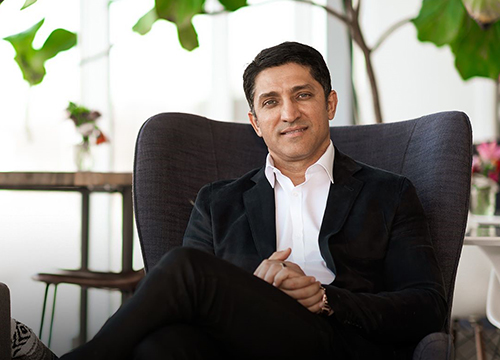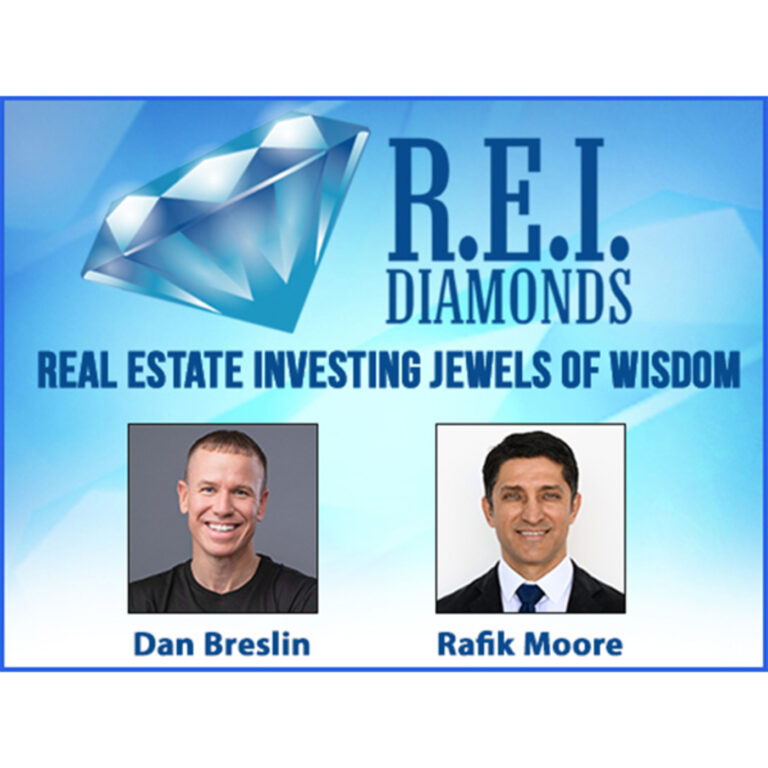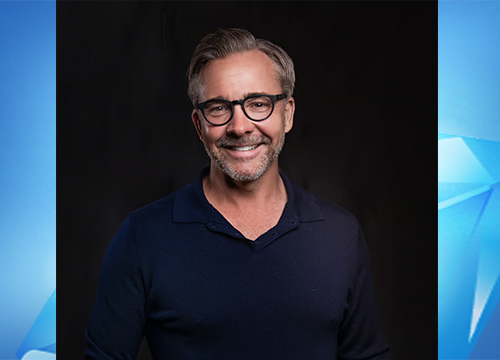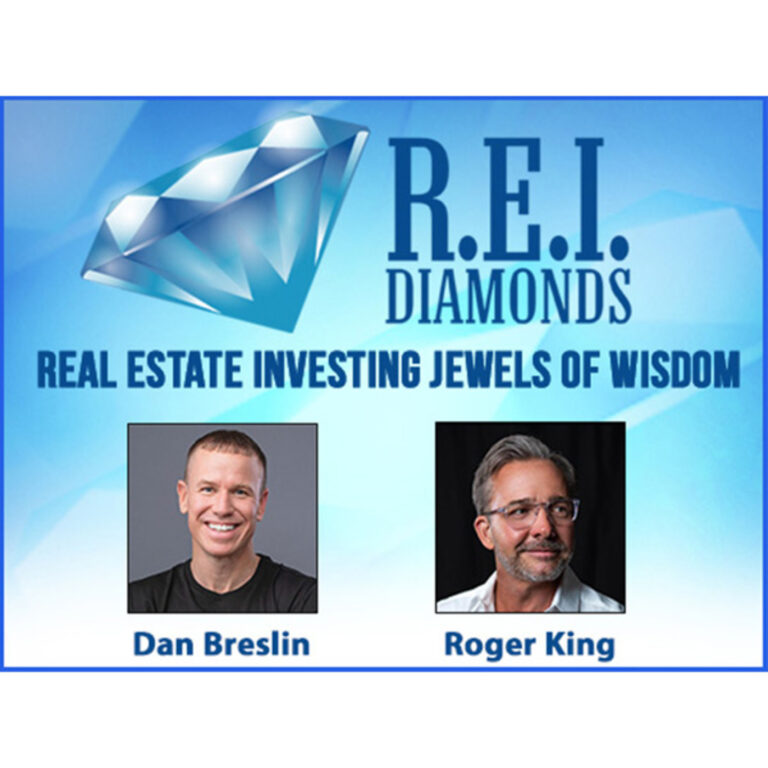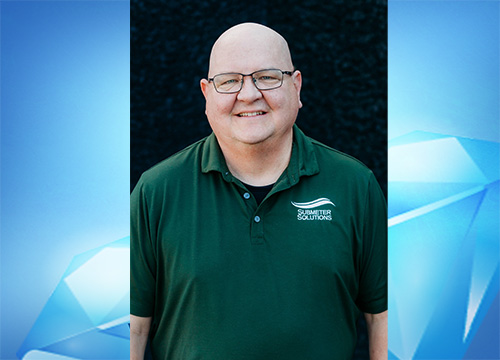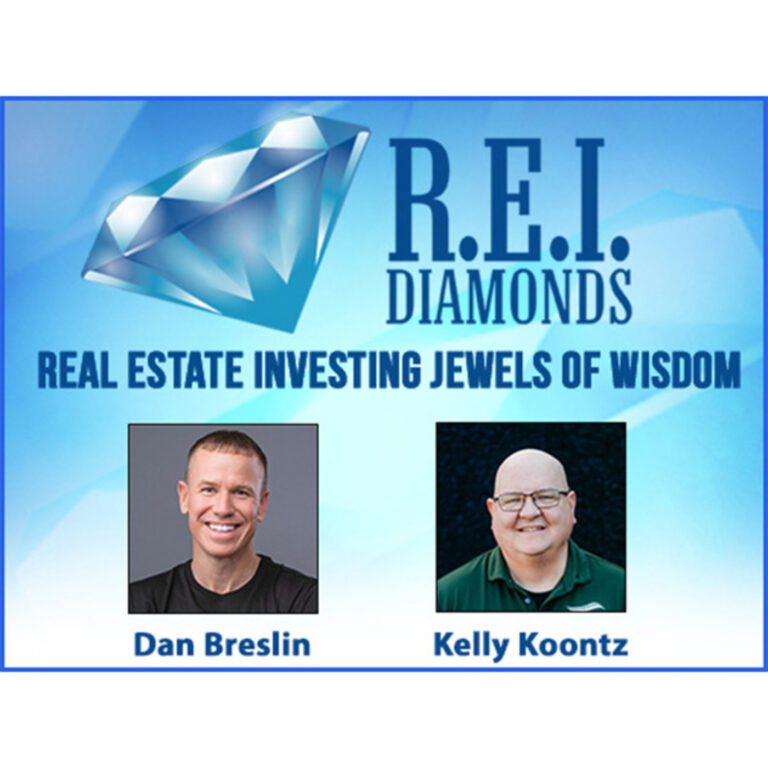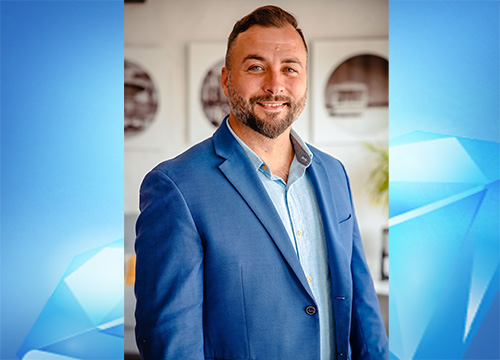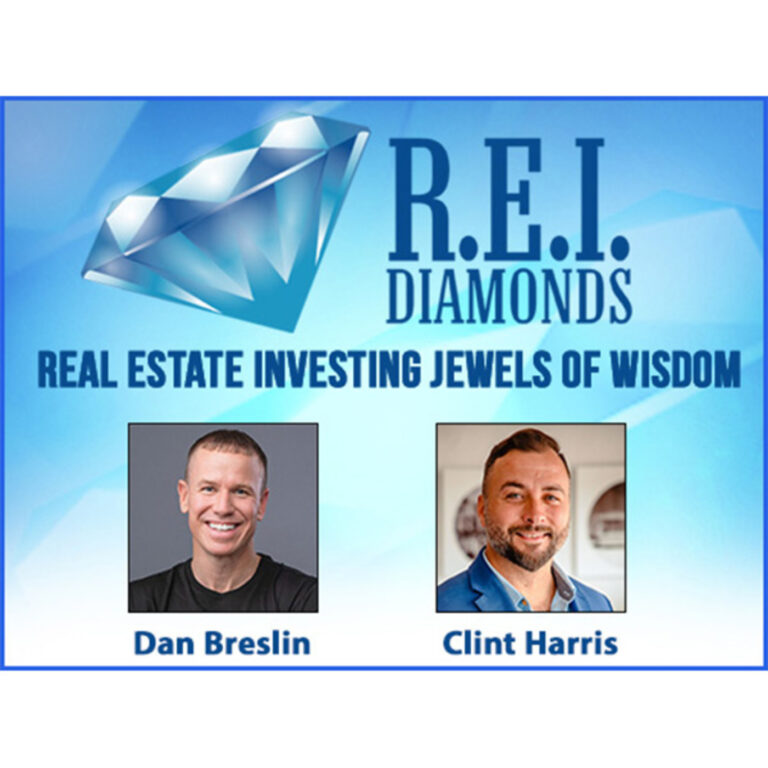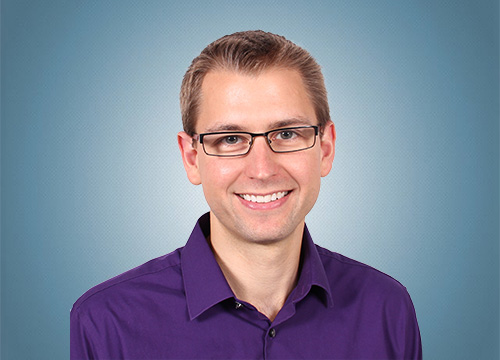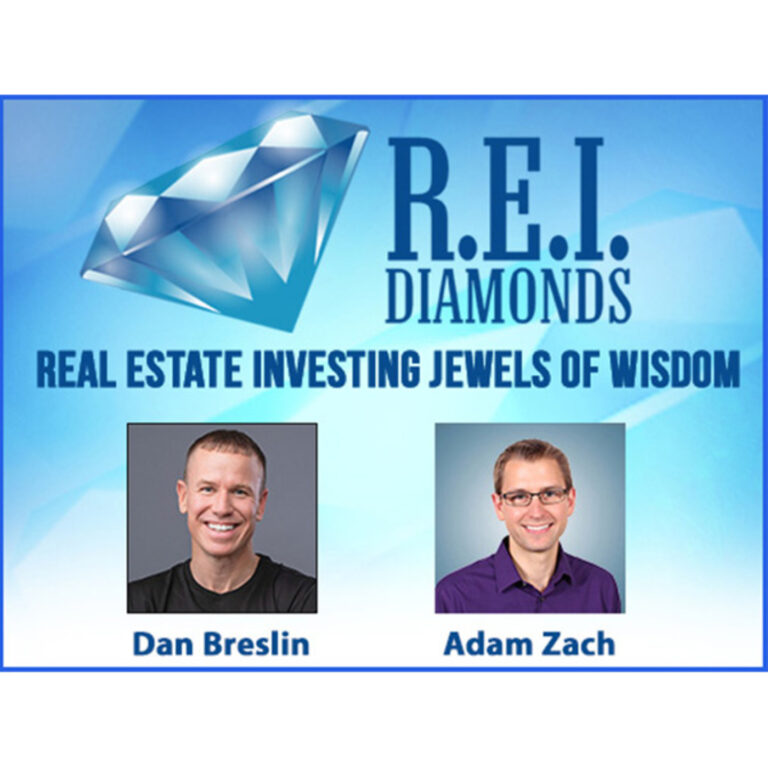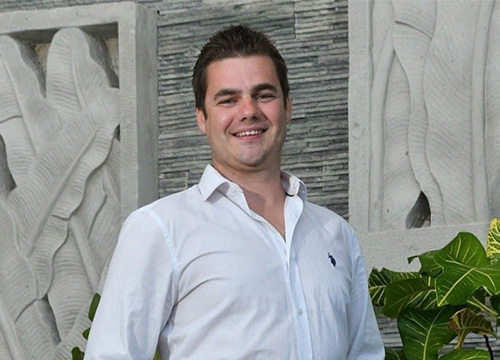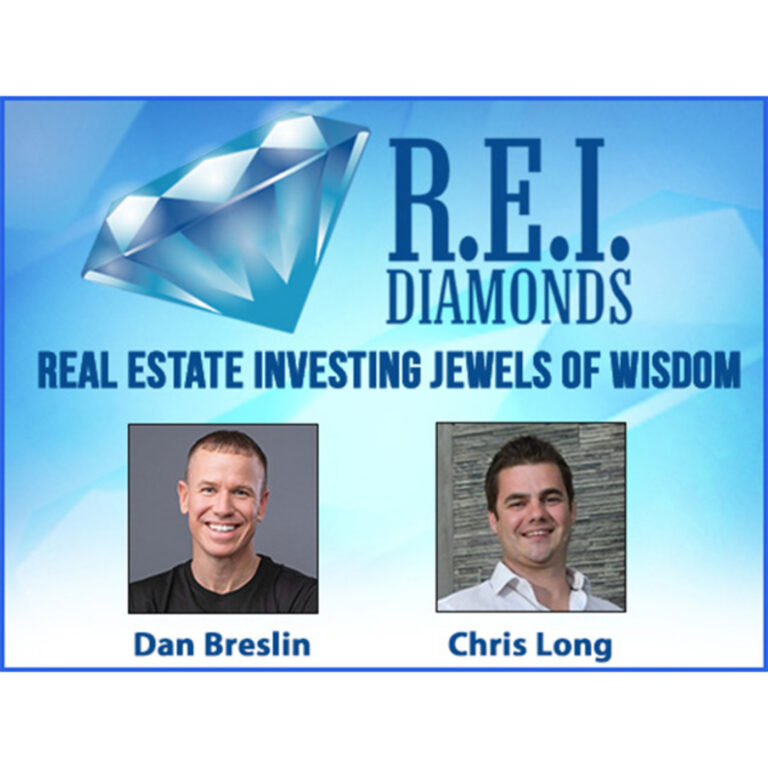Guest: “Work Shop” author Joe Brady is an expert in retail commercial real estate. He served as CEO of Americas at The Instant Group as well as head of real estate for Walgreens. His early career includes capital markets & brokerage with a business-sale exit to JLL.
Big Idea: Real estate may go up in value, but it certainly comes with an expiration date. Retail & office are the 2 recent asset classes where much of the product is simply useless and worthless—as many properties have sold at land value minus demolition costs. Joe has observed that retail has been forced to evolve because of the iPhone, and now office is facing the same challenges.
This episode is also sponsored by Lending Home. Lending Home offers reliable & low-cost fix & flip loans with interest rates as low as 9.25%. Buy & hold loans offered even lower. Get a FREE iPad when you close your first deal by registering here now.
Resources mentioned in this episode:
View the episode description & transcript here:
“Work Shop” Author Joe Brady on the Evolution of Retail Real Estate – REI Diamonds
Joe Brady & I Discuss the Evolution of Retail Real Estate:
- How to Engage a Mentor with Cold Outreach
- Effectiveness is Superior to Productivity
- Recent Grocery-Anchored Retail Development
- Tenant Driven Development = Lower Risk Development
Relevant Episodes: (200+ Content-Packed Interviews in Total)
- Chris Prefontaine on $75,000 Average Profit Per Deal
- Benefits of Scaling to $350 Million in Self Storage with Kris Benson
- Life Lessons on Prosperity with The Wealthy Gardener author John Soforic
- Joe Mueller, REO Broker & Investor on Picking the BEST Deals for Your Portfolio
—
Watch the episode here
Listen to the podcast here
“Work Shop” Author Joe Brady On The Evolution Of Retail Real Estate
Joe Brady, welcome to the REI Diamonds Show. How are you?
I’m doing great, Dan. Thanks for having me.
Building A Legacy In Commercial Real Estate
Joe, we’ll talk about your background with Walgreens as head of national real estate, I believe. We were talking before we hit record about how we’re both Philadelphia guys, then Chicago guys and then Florida guys still to this day. With that, do you want to give a brief background of your career history and how that’s led up to what you’re currently doing, Joe?
I’m happy to. I’ve been in commercial real estate for 35 years or so. During that time, I’ve had a chance to sit almost at every seat at the table. I’ve been on the capital market side, the brokerage side, the advisory side, and the principal side. I grew up in the retail business and was a part of some very high-volume rollouts, including Hollywood Video, back when that was an industry. There’s only one Blockbuster left. Did you know that?
Somebody mentioned that two years ago. It must be like a museum now or something.
It’s a swag shop. It’s in Oregon, of all places. That industry doesn’t exist, but I was part of the team that rolled out 2,000 of those stores. We took the skills and the relationships and rolled that into an outsourcing business that we ran from 2000 to 2008. T-Mobile USA became our biggest client. We opened another 2,000 of those stores, the first 2,000 T-Mobile stores in the US. I wound up selling that business to JLL on January 3rd, 2008.
For those who don’t track history, that was lucky timing. I’ll take it. I spent time at JLL running the retail practice, ran the banking industry group. I was doing a combination of retail and office. I had an opportunity to join Walgreens as head of real estate. I was there for almost four years. Right before the pandemic, I left and joined a company called The Instant Group, which is the Airbnb of flexible office space.
If you can imagine joining this company, I was the CEO of the Americas, the company was based in London, it’s the Airbnb of flexible office space. It also builds out office space for Fortune 100 clients, and then Instant would run those spaces, creating a lot of agility and flexibility in the office world, which didn’t exist. I started that in December of 2019. Three and a half months later, the pandemic hit, and everyone was looking around thinking, “What are we going to do about office space? No one was in the office.”
For the next four years, we quadrupled the revenue and the business, building out offices from Buenos Aires to Mexico City to Toronto, throughout the U.S. It was fun. While that was happening, I kept hearing all of the same death knells and chatter that I heard ten years ago about what retail said about office. It struck me that I had seen this movie before.
I started putting some thoughts to paper about what we learned in the retail world and what the office industry could learn from retail, given that there were two dramatically impactful forces. One was this acceleration of technology in our world, and two, how consumers were reacting to that acceleration. The short of it was that real estate wasn’t keeping up with those changes. Retail had to learn the hard way. Office now is going through a tough period.

It’s ironic. My very outside observation of Walgreens’ story, and this is uneducated, so take everything with a grain of salt, this is my gut feeling. I remember from 2015 or 2016 through 2020, you could usually track distress or the assets that are starting to fall out of favor on Ten-X, the commercial real estate auction platform, or any other auction platform. When the distress started to occur, it was in 2009 or 2010 that we started, I started remembering personally seeing shopping malls and retail centers start to hit the auction sites as the retail death knell, as you called it, was starting to pop up.
I think that the trend in retail seemed to happen over a lot slower period. What happened in 2008, 2009, and 2010, and all the bankruptcies, was cycling out of a lot of weaker retailers that went bankrupt, and a lot of vacant space came online during that time period. It felt a lot slower than what we witnessed in office, to me. Again, this could be me talking out my ass, and I don’t have the numbers to back it up. Office was one-two left-right and a knockout punch by COVID. It was like this instantaneous thing with office because Zoom went from $40 to $400 a share, and their subscriber growth was through the roof.
Walgreens Strategy And Retail Trends
We’re doing a Zoom call as a result of that instant tech shift from the black swan event of COVID. I remember Walgreens, being in the retail space, they started showing up on the Ten-X auction platforms, and they were selling for $2.5 or $3.5 million, sometimes less, sometimes more. When COVID came, and the COVID money and the vaccines came out, there wasn’t a single Walgreens site available anywhere in the auction. I’m starting to see them pop back up again. It’s interesting. I’d be curious what your observation, if you’re allowed to speak on it, with Walgreens and maybe some of that trend with the retail death knell and how that might affect someone with such a large footprint like that.
Especially with hard corners all over the US, some of the best-located real estate. That was the strategy for Walgreens, hard corner, the highest traffic corners in XYZ location, with a very large facade, store, and real class A presentation compared to what I remember seeing from CVS and Rite Aid. Middle of the block, kind of weird, nowhere near the caliber of real estate that Walgreens had. I think that that strategy must have served them well for a long time. I don’t know, what would be your comments, if you’re allowed to say anything from the inside, and for the rest of the retail?
I’m far enough removed from it. While I have had some experience having sat in the seat, I’ve also seen what’s happened since. Dan, you said that from about 2010 on, things started to change a bit from a retail perspective. Remember, the iPhone came out in 2007. It took a couple of years for retailers to get good, or at least start to provide a relevant and acceptable shopping experience online.
Everyone thought, this whole cell phone thing or online was going to replace brick and mortar. You heard the death knells of no one’s ever going to go to a store again. The truth was the retailers realized that the consumers were voting with their wallets. They were saying, “You’re either relevant and I want to spend money with you, or you’re irrelevant and you’re going to go on the dust heap of history and you’re going to go away.” That applied to malls as well as to retail locations.
The C malls have largely been bulldozed, and the B malls have largely been D malls. What you’re seeing now is more of a mixed-use layout with live, work, and play. You’re seeing gyms come in. You’re seeing multifamily coming in as well. Quite interesting. From a Walgreens perspective, you’re right. The theory was, how do we get as close to 80% of the US population? How can we be 5 to 10 minutes from 80% of the US population? How do we drive our business from the pharmacy back of house and then enable the front of house, which, frankly, had insult pricing? When you looked at buying a Diet Coke at Walgreens, it was because you were dying and you needed it. You were willing to pay anything.
What happened is these two stories now come together, this confluence. I remember talking to the head of Duane Reade in New York City, which Walgreens owns. He tracked a number of different items, and he was able to get 4 or 5 different items delivered by Amazon to his home cheaper than what he could get himself, buying it in-store with his employee discount. Think about that. The consumer is not dumb. The consumer is very smart, in fact. They’ve decided to vote with their feet. There’s this whole separate parallel conversation we can have, which is a little bit of a rabbit hole, but it’s around organized retail crime.
In addition to having extraordinary competition with the front of the house that Walgreens was experiencing, and having price compression on drug costs from the back of the house and getting proper reimbursements, there was a huge margin squeeze happening in and of itself. You then factor in that there is a Tony Soprano of the dark supply chain that’s sending people, armies of these street urchins, into stores and swiping entire shelves of products. ICSC, which is the retail industry trade group, has done an analysis, and the impact on the US is about $100 billion a year. For Walgreens, it’s about $4 billion a year.
For your audience who goes into a CVS, a Walgreens, or a Target, you see everything behind a locked plastic little door. It’s a horrible customer experience, but what’s the alternative, like having everything ripped off and there’s no product? There has to be a better answer to that. In any event, Walgreens has had a number of pressures on their margin. They tried a number of different things, whether it’s primary care inside the store that didn’t work. They’re trying to dislodge that. What you’re seeing now is, and they announced publicly, that 1,200 stores would be closed. Many of those are going to be natural expirations of a lease.
In other words, Walgreens would initially open and have somewhere between a 15- and 25-year lease and then have a series of five-year options thereafter. It was almost rote that you would click off those options. Sure, we want to stay at that location. What the company has said is, we’re going to let some of these stores naturally expire, go away. We’re going to move on, and we’re going to focus on markets and stores where we have the business, we have the pharmacy business, we have good front-of-house business, the real estate makes sense. Slim down from what was at one point over 9,000 stores to probably a chain that’s going to be 5,000 or less. I’m supposing, but it probably needs to get there.
Career Path Advice In Real Estate
It’s interesting. I’m going to take a detour from our trends. Before we touch on some of the things you wrote about in Workshop, I want to back up to the 30,000-foot level of people who are building their own careers and are tuning in to this. I believe I had it written down here somewhere. Maybe I didn’t. You were in capital markets. You were in brokerage. You were part of this rollout of several thousand locations in two different instances. You talked about being on the principal side. Were they variously happening throughout your career?
Maybe if someone is tuning in, should they also try to take a circuitous route like that and maybe do brokerage to learn and get the contacts? Maybe they should be going after some executive-level real estate job if that’s what their training and background is because there’s a lot more benefit, perhaps, when you get to the principal side. I’ll plug my side, I’ve always gone to the principal side. It’s like principal, principal, principal.
I want to run the deal. I want to make the decisions. I want to take all the risk and hopefully make the gain on the upside. Do you have any advice to somebody, or maybe yourself starting back out again, of paying attention to one of those categories or doing it exactly in that same method? If you had your choice and could wave a wand.
Clearly, you’re smarter than I am.
I don’t know about that.
I was curious when I came out of business school. I went to UNC-Chapel Hill, and I went to work for First Chicago, which is now part of J.P. Morgan, in the corporate finance group. Part of my thinking was, I wanted to understand where the money came from and how it worked. That was 1990. Knee-deep in the S&L crisis, I showed up in the real estate department. All we were doing was real estate workouts. It was a phenomenal opportunity to see how projects and developers had approached situations where, under one condition, things made sense.
You had a major macro change, being a crisis, in this case, the S&L crisis, and how that impacted the value of real estate and what people had to do to work out those projects and who won and who lost. It was interesting. Interesting for me to see because I had no risk. I had no downside. I was learning. I was a sponge. I have had an opportunity to get entrepreneurial, to be that principal. For your true entrepreneur audience, that can mean sleepless nights. That can mean making payroll.
That can mean one thing goes wrong and everything could go. Sometimes you’re on a razor’s edge. It’s not always, as Scott Galloway says, “Champagne and cocaine” when you’re an entrepreneur. You’re up against it. I’ve had situations where I’ve built several businesses that got to a point where I could sell them. When I did sell them, I felt comfortable, for instance, going into JLL and being in a corporate environment. It allowed me to recharge my batteries. It allowed me to get a little bit more balance in my life. It allowed me to think about next.
All along the way, Dan, and I think you’ll appreciate this, I know it’s been part of your success, and I’ve tried to collect as many people as possible. I tried to be a good mentee when I was younger, asking a lot of questions, and trying to meet as many people as possible. It wasn’t always easy because sometimes it’s a bit awkward.
I had this friend who I remember, his name’s Ken Marino, he called me up one day and he said, “I met this guy named Trammell Crow.” I said, “That’s a company.” He’s like, “No, it’s a guy. I called him up and said, sir, I would love to come to Dallas and see you. Could I spend fifteen minutes with you?” I thought you were not allowed to do that. Ken said, “Of course, you can.” It opened my eyes.
For the readers out there, there are senior people in the industry who would love to spend time with you. They’ll give you 15, 20, or 30 minutes. That, I think, is an important point. Don’t be shy. Collect as many people. When you start to get my role in the industry, and you’re approaching it as well, Dan, it’s like all of a sudden, we become the mentor. I’ve always said I’m nice to young people because I never know when I’m going to be working for them, even though maybe they were working for me prior.
There are senior people in the industry who would gladly give you their time. That is a crucial point. Don’t be shy. Connect with as many people as possible.
That’s come to pass, interestingly enough. This industry can be phenomenal. There are days when it might be hard work. When you’re doing deals with people you like and respect and you’re learning and you’re making money, it’s a super fun industry. That’s why making yourself available to industry groups, to conferences, to constantly learning is vitally important.
I’m going to make a plug for those who don’t recognize Trammell Crow. There’s a great book that was written, probably in the ’70s or ’80s, Trammell Crow, Master Builder by Robert Sobel. This is hands down the best book I’ve read, at least in the last 12 to 18 months. Hands down. To get in the door, to even talk on the phone with Trammell Crow, I don’t know if it was the father or maybe there’s a son by the same name. Either one. We’re talking about real estate development, American royalty if you were. I think Trammell Crow is the largest real estate developer, maybe on the planet, besides the Chinese government.
His son Harlan has been in the news a bit. He has a very good friendship with Clarence Thomas, but we won’t get into that in this episode. Trammell Crow built his business and sold his corporate services side of the business to CBRE, which is interesting. Trammell Crow still exists as a company, and they do development. The things that Mr. Crow did early on were remarkable. He was a visionary. He built some of the first industrial distribution centers in Dallas, and he built these large exhibition halls in Dallas. Anyway, a great book. I know that you’re interested in books, but that’s one on my shelf and one that’s important to me.
Networking And Reaching Out To Mentors
I shared it partially, “Read the book.” The other part is to look at the caliber that Ken Marino was able to contact by reaching up as he was somewhere in his career looking for some additional inspiration. The question I think I’d like to pull on a bit is, Joe, what pro tips would you give to somebody in like Ken’s position, who is sitting here contemplating making the call? What’s the process for that? What is the most organized approach for someone earlier in their career to reach out to someone they might want the 15 to 30 minutes? When people say to me, “I want to pick your brain,” I’m like, “Sorry, I don’t allow brain-picking.” That’s not the format. I’m curious if you have some tips on how that call may go successfully if somebody were to make that to you or someone else in some executive-level position somewhere.
I always default back to homework. You have to have a point of view, there has to be a reason. What kind of gift can you provide to a Trammell Crow in return? In other words, you may be early in your career, but you know something. It is because the world is changing so fast, that if you’re part of the I generation, Gen Z, or you’re a Millennial, maybe you have a different view or a thesis, a hypothesis on some real estate. You say, “I would love to have a conversation with you to share my thoughts.” I’d like to learn from you.
By the way, I think it’s vital to be authentic, to be vulnerable, and to share aspirations. In other words, if I called you up, Dan, I’d say, “I want to learn about being a principal. This is where I am so far. I’ve made some mistakes. You can commiserate,” but get to the crux of it. What is it? Come up with a thesis or an approach. Have your homework done. I sit on the advisory board at the University of Florida’s Bergstrom Real Estate Center, and I have mentees every year. I find myself having more conversations with students who are not my official mentees, but they’ve done their homework. They’ve either read my book, they’re interested in retail, or they’ve approached me after one of my lectures.
They have interesting perspectives that they want to test and say, “Is this on track, or am I thinking about this the right way, or what am I missing?” That type of engagement, for me, is healthy. I also want to prepare because I want to get something out of them. I want the perspective. How are you looking at power? How are you looking at jobs? What is your view of an office? How are you shopping? How much are you buying off Instagram ads? When was the last time you went into a bank? Are you physically going in, engaging in physical banking, or is everything electronic? There has to be this two-way street.
I love that. It’s like if I summarize it, I love the be prepared thing, do your homework. I wouldn’t take the call, I wouldn’t schedule the call if someone didn’t. If it was this blind pick-your-brain thing, it’s like, “Sorry, I’m tied up. I’m busy.” If somebody has done the research, and as a podcast host, I’ll get like, “Your last podcast was great.” Nothing else. That’s copy and paste. That’s not you did your homework.
The other part of the gift, or adding value, I think, to summarize that, have some agenda and how much time you’re expecting. “Can I get 15 to 30 minutes on a phone call? I’d like to talk about this, this, and this. Here’s what I’m thinking on this. Do you have time at 3:00 tomorrow, or would next Wednesday at 4:30 be better?” Two times, two dates, very specific, to allow the other person to not get caught in the trap of, “Can we do this sometime? Sure. When do you want to do it? 12:00 doesn’t work. How about this other thing?” Sorry, but five different replies for the busy executive are going to be overwhelming.
I want to make it very simple for the person I’m reaching out to, to know what’s going to be talked about. They can also prepare, which is the reason I want the agenda. If somebody were to reach out to me, I want the agenda so that I can be prepared to make sure, maybe I’m not the right person to even have this conversation. I can let you know that and maybe even give you direction as to who may be the right person.
Simple bullet points, and be sure to provide two times and dates you’ve committed to so that it’s very easy for them to confirm that. They throw it in their calendar. They can touch the email one time, and then you can move on to the 15 or 30 minutes, or whatever the case is. My final simple one, Joe, would you prefer they reached out that way for a 30-minute phone call or the lunch date?
I would say the 30-minute phone call. I travel quite a bit. The thought of nailing down a lunch date is difficult and remote. You could ask my wife. I think it’s a brilliant aspiration. If you could get to that point, somehow having a face-to-face, if you know you’re going to New York City for a conference in the second week of December, you should have your list of people that maybe you’ve talked to and say, can I buy you a cup of coffee?
It could be in the morning, could be in the afternoon. I do think there’s enormous value in having that face-to-face, having a handshake, and having eye contact in person. There’s neuroscience behind it that makes the bonds even stronger. The oxytocin that exists between two people when they’re together, not when they’re two-dimensional and on a show or a call. I’ll be in Chicago soon, so I’ll track you down. I think there’s an aspiration for you to get together for a coffee or lunch. Probably initially, if you can crack the code with a call, you’re doing well.
The Story Behind Writing “Work Shop”
You’re right about that. Cool. Workshop. The book you had written, did you co-write this with an author? Did you sit down and hatch this over a period of years? What was the genesis for the idea and the thesis of the book?
I had the idea, and I had written a number of articles and had a number of presentations and speeches. I left the Instant Group in June of 2023 and took about a nine-month sabbatical. During that time, another thing that I believe is vital for everyone, it doesn’t matter where you are in your career, is to have a growth mindset and to always be learning. I had this opportunity, and I took a course at MIT in AI and business strategy because I wanted to learn more about what was going on.
I took another course at the University of Chicago on behavioral economics. There have only been five Nobel prizes in economics awarded in and around behavioral economics. I thought that, if we’re going to focus on consumers and people, then it’s going to be important to understand behavioral science and what motivates people, what incentives work. I’ve been interested in this area of behavioral science and behavioral economics, and went to the source and took a course in it. Between those two, it helped form a bit of the backbone for the book. I wound up writing it myself.
I had a great publisher/editor called Grammar Factory. If any of you have ever considered writing a book, it’s not as hard as you might think it is. There are companies out there that can help streamline it. Grammar Factory is based in Montreal but is a global company. Scott McMillan, who’s the CEO, is fabulous to work with. It was affordable and great value for money. My editor was in Perth, Australia. I never met her, but it didn’t matter because we were operating asymmetrically. I’d write something, and then she’d look at it while I slept, and then it came back and forth. That’s the genesis of writing the book.
If you’ve ever considered writing a book, it’s not as hard as you might think. There are companies out there that can help streamline the process.
It wound up the whole process, probably six months. I wrote it because, A) I always wanted to write a book. I think you should have big life goals. B) I thought that I had something to say, and I wanted to share it. I wanted to provide a different point of view. Probably the best way to encapsulate my thoughts is by an example. Oftentimes, in real estate, we see the ribbon cutting, which is great, cut the ribbon, job done, let’s go play golf. In this new future world, I argue that the ribbon cutting is the beginning of the process because space is being used differently.
The consumer is voting in how they spend their time and money. We know for a fact that the consumer is voting with her wallet in retail. If you’re not relevant, you’re going to go away. If you are relevant, and you stay current, and you engage in the personalization, and if you’re engaging with Alo, or Lululemon, or Apple, or, name it, Restoration Hardware, RH, they’re getting hyper-personalized. They understand your buying preferences, they’re engaging with you on different levels.
In many respects, some of these retailers are now movements that we all want to be a part of, like Apple. The question then remains, how is the office class going to react, now that consumers, who are the employees of the new consumers are able to vote with their feet as to when and where they work? Assuming that you’re not working at a call center, or you’re not a surgeon, if you’re operating in the conceptual economy, your tool in trade is a laptop or a cell phone, you can work from anywhere.
Why are companies like Amazon mandating that people come back to an office five days a week? If part of it is to drive culture, culture is based on trust, and what way to erode trust faster than to issue a mandate? Why hire adults and then treat them like children? In particular, because the employees who are going and working at these companies are the same ones who have, for ten years, engaged in agency, autonomy, and optionality in how they spend their money. What we learned through the pandemic was that many people thought they hated their job, turns out, they hated their commute.
In Chicago, I lived in the western suburbs. If I had to go up to the North Shore to Walgreens, it could take anywhere from 40 minutes to 2 hours each way. That’s a massive trade. That’s why I wrote the book. I think there are a lot of important things that are in the book. I talk about this notion that shop, at one point, was a place you went to, it was a noun. It is because of technology that it became a verb. I argue that work is likewise going through that transformation. It was demonstrably paired up with office. If I said, “Dan, I’m going to work,” that meant I was going to an office. Today, those two are decoupled. Work is a verb.
I know that sounds obvious, but it’s no longer a noun or a physical place. It’s a thing we do irrespective of place. It can happen in an office. It can happen in a satellite office. It can happen in a WeWork. It can happen in an airport. It can happen in lots of different places. We have to be mindful of that. I think there’s some cost bias that a lot of companies have. I’ll use Amazon as an example, they own $50 billion worth of office space. Darn it, people need to go there. Other companies, who aren’t saddled with that much in terms of fixed space, can be smart about how they offer an ecosystem of places for people to work. You can expand your employee base. You can get mothers who are caretakers.
You can get people who are caretakers, whether it’s young children or older parents, to remain in the workforce and be productive. They’re also going to operate at different hours too. At the end of the day, if you’re in the conceptual world, if your tool and trade are ideas and analysis or creating products and things like that, do you have to be in an office 9:00 to 5:00, Monday through Friday, as if we’re still in the industrial era? Those are factory constructs. Things have to evolve. Part of what I wanted to do in the book is give some historical context, talk about how retail has learned, and give some thoughts on what office and the world of work should be looking like for the next couple of years.
Balancing Remote And Office Work
I’m excited. I ordered the book already. I always get the hardcover. I like them on my shelf for the future. The sunk cost theory is interesting with the mandate. Our business has maybe 22 acquisition people on the team, spread between three offices in the Atlanta region, Chicago, and the Philadelphia region. We were 100% remote when this thing started, 8, 9, or 10 years ago. We started forming the organization. We got offices in 2016, some small ones, in 2018 and 2019, a little larger. We’re now in some pretty decent-sized spaces, 5,000 to 10,000 square feet. These are not WeWork-sized type of offices. That comes with overhead.
I notice I get feedback from the team that they do find they’re more productive. They’re a little more creative in the office. They’re more savvy on the phone. They’re showing off for each other. We get this office culture where we do have a generation of more productivity and creative results that occur there because, invariably, whether it’s Netflix, the fridge, or it’s dinnertime, or there’s an Amazon delivery at the door, there’s a lot of interruptions that would occur in the home environment versus the office. We’re not five days in the office required.
We’re probably a few hours here and there, three times a week. There’s probably an all-day Monday and maybe half a day on Friday or something like that. A lot of our business happens out on location, at the physical property where we’re making the deal occur. It’s not like we could do a 9:00 to 5:00 and do it all from inside the office. I wonder to myself out loud, I guess with everybody, I’m not wondering to myself, but it’s like, what is that?
What is the right balance between those who are disciplined to be effective in the home office environment versus those who maybe didn’t spend years developing that home office environment, who love working at home, and who are probably more susceptible to interruptions because they haven’t thought through and built out the home office environment, versus the people who are easily capable of producing the same amount at their home office environment versus the office?
I think the office has its place, maybe for the people at the earlier end of the career, where the momentum’s there. There are people around them who’ve been doing the business for 5 and 10 years. In their first year or two, they will no doubt make more deals, and more productive deals and lose less money on behalf of the company when they’re operating out of the office. I think it’s a push-pull. I wonder, where is Amazon’s heart? Is it the $50 billion in sunk costs, or did they start to notice a falling off of creativity and effectiveness? Who knows?
I love that you bring up effectiveness because, in the conceptual age of this new-collar economy, is it about productivity, or is it about effectiveness? If I send out a hundred emails and I call you up, Dan, you’re my boss. It was like, “Dan, I sent out a hundred emails.” I could say I’ve been productive, and I’ve worked my ass off. Maybe another day, I send out three emails, and two of them turn into deals. I also got to play nine holes of golf that day. Do you care? I’m not here to say it’s all about working from home.
What I’d love to emphasize is that hybrid work is the flip side of the coin of omni-channel retail or hybrid retail. What we’ve seen in hybrid retail is about 20% of the time, 20% of total retail sales of $3 trillion, are happening in the e-commerce channel. What we’re dealing with is these multiple channels of how people are spending their money. I think there’s an equal and opposite example of how people make their money. Do we need to be Monday through Friday, 9:00 to 5:00, in an industrial-era construct? I don’t think so.
I think what has happened is that we have generations of Dilbert middle managers who have determined that if you’re sitting at your assigned station, you are therefore being productive, which is complete and utter bull hockey. It’s not true. I argue that leadership is greater than management, that we need leaders at all levels who are helping drive the company mission and mandate, who help define what being effective is, who then surround younger people with resources, and even mid-career people with resources.
Leadership is greater than management. We need leaders at all levels who drive the company’s mission and mandate and who help define effectiveness.
Michael Jordan needed a coach. Tiger Woods needed a coach. Everyone needs a coach. How many coaches are out there for the middle managers that we have? Very little, unless someone has some get-up-and-go, and they’re reading books, and they’re listening to podcasts like yours, and they’re doing a number of things. By and large, I argue that leadership is greater than management and that you need to focus on that. I argue that effectiveness is greater than productivity. Being in an office is fantastic. As a young person, you want to be in an office.
It’s generally a target-rich environment to find a mate. It’s where you find your friends. It’s where you develop your social networks. It’s vital. It’s where you learn from the silverbacks that are in and around. For middle management and even more senior people, you’re able to give back. What we’re seeing is this desire to have more of this experience happen in office settings, as opposed to passive attendance. Purposeful presence over passive attendance. During the pandemic, we were doing some research, and I heard this phrase that I loved, and I carry it with me, and it’s in the book, which is a philosophy that on-site is the new off-site.
When we have people coming together, is there an agenda? Is there a meal prepared? Is there a guest speaker? Are we challenging each other in a different way? I think mandates are an intellectually lazy, blunt instrument, and that we have to get a lot smarter to provide incentives for people. This is where it goes back to this whole notion of behavioral science and behavioral economics. What are the nudges that can get people to make the decision to be in an office? If it’s an environment where everyone’s there if it’s an opportunity where, if you’re not there, you have to opt-out, but otherwise, everyone’s opted in and going to be in the office.
If there’s something that can sway you and make the two-hour commute a day worth the trade, people will be in the office. I know there was a law firm in New York, and they had this mandate one day for everyone to be in the office, and out of 120, maybe 58 showed up. By the way, there’s no bite or bark in the event people miss a mandate. There’s no wholesale firing going on unless you’re Elon and you want a complete reduction in force, which he did at Twitter. That same group had another event two weeks after, and there was a social event after, call it business hours, and out of 128 people, it was 115 showed up. It’s not that people don’t want to show up, but they want to show up for a reason.
If you mandate that I have to come to an office and commute 15 miles each way or take public transportation, and I’m sitting at a cubicle and I’m on a Zoom call that I could be doing from home, and I could have seen my kids when they wake up, could have helped get them dressed, I could have been on the Zoom call, and then I could see them when they come home. I think there’s this interesting push-pull like you said, that goes from work-life balance to life-work balance, and you can still get some of the same things done.
I love it. I could go on this, this is a hot topic, debate it. We’re looking at office assets, we’re passing on everything. Some friends of mine have bought some very cheap, $10 a foot for class A space and class B plus, if not class A minus location, phenomenal deals. They’re going to make a shitload of money. It’s going to take 5 to 10 years. Certainly, for the next 24 to 36 months, it’s probably not going to be fun for them to own these assets.
Joining LRG Investors and Future Plans
I think you’re right and spot on with the experience being created, people rethinking, and turning this into more of the omnichannel retail model. We have to evolve what the office is for and what we’re doing to attract people back to the office. I’ll digress, and we’re going to shift gears here a little bit. You joined as a partner, LRG Investors and you guys have in, I believe, in the portfolio, shopping centers with grocery anchors, things of that nature, and have done quite a bit of tenant-driven development, which, for those tuning in, that’s what Trammell Crow built a significant portion of his business on, who we were mentioning earlier.
The tenant comes and says, “I need 100,000 square feet.” The landlord builds the 100,000, has the lease lined up, and the tenant day one. It’s a phenomenal development strategy if you can do that right. Would you mind pulling on the thread of the decision to join LRG and what you guys are anticipating doing over the next 18 to 24 months?
I’m happy to. LRG is the development and investment arm of Lockehouse Retail Group, which was founded by my friend Steve Cutter. He partnered with Josh Amoroso. They’ve built both companies. Again, this goes back to my earlier point of collecting people. I was doing deals with Cutter 25 years ago, easily, if not more. We’ve become friends and colleagues and have a great deal of mutual trust and respect. When it came time for me to think about doing something next, he and I always talked about doing something. With Josh and Steve, now we’re together.
What the company has done over the last 3 or 4 years is focused on acquiring grocery-anchored daily needs centers that have some adaptive reuse and some uptick in rental rates and outpads and things of that nature. It was difficult to build ground over the last 3 or 4 years. Rates were high, input costs were crazy, and labor was off the charts. It was a difficult time. We’ve seen a number of areas ease. Clearly, we’ve had two, a 50 and then a 25 basis point drop from the Fed.
We haven’t seen a reaction in ten years. In fact, the ten-year has gone up. We’re seeing more dollars, more equity capital dollars, chasing retail deals now than we have in the last five years. That’s for a number of reasons. One, there’s been over 100 million square feet of supply taken out of the retail equation. Those are the old B malls. It’s the last Kmart closed, if you can believe it, this fall. I say that most people say, “I didn’t even realize one was open.’ You have a number of retailers who are in a growth mode.
The jet fuel for those retailers is net new stores, adding to the store base. Starbucks is still blowing and going. The banks, Chase are opening up. I think they added something like 250 or 300 new bank branches. We’re seeing companies like CAVA coming into the picture. Their stock is up 300% since the beginning of the year. Wish I would have bought it. My friend Jeff Gaul is the chief development officer there. They’re blowing and going and doing great. It’s interesting because what they’re offering is this Mediterranean menu, have you been to a CAVA? Are you familiar with it?
Not yet. Tell me about it.
Think Mediterranean menu in what looks like a Chipotle. You have the whole lineup, the walking line to construct your pita or your bowl or whatever. Super healthy food, reasonably priced, great lifestyle. These guys are blowing and going, and they need to expand. The grocers are still expanding, the Sprouts of the world. We talked earlier about Trader Joe’s. You’re seeing Kroger and Publix following the demographics. I’m here in northeast Florida, in Jacksonville. You start looking at places like Daytona, which hearkens back to spring breaks and racing cars.
There are 10,000 new houses going in the Daytona market. It’s staggering. There are 1,200 people a day still moving to Florida. There’s a great opportunity to capture some of these demographic shifts to help meet the demand for growth. We feel like inflation has subsided some. We’re seeing better pricing, not super great yet. We tend to be doing, looking at single-tenant, built-to-suit, multi-tenant buildings under 10,000 square feet still don’t pencil great. Over 10,000, we’re seeing better probabilities. We think that our thesis is that the environment is going to continue to get better. I think the election means that carried interest is probably going to stay put.
Taxes are likely going to be reduced, regulations will be reduced. Hopefully, inflation on inputs will come down. It’ll start making a lot more sense. The capital markets are strong. Banks want to lend to retail. That wasn’t the case five years ago. I was at an ICSC trustees meeting. One of the phrases was, “Thank God we’re not office,” because there was a long time there where retail was out of favor, but it’s now back in favor. We’re looking at opportunities across the country. We have great coverage along the West Coast, Rocky Mountain West, as well as the East and the Southeast. We think that there’s a place to be, and to help clients grow and to make some money.
Trends In Retail Development And Store Sizes
The trend in retail, the new ground-up developments I know of personally, a friend of mine built a Starbucks, came out of the ground. That was under construction, I think last summer, maybe. I’m sure they’re serving coffee. Another friend of mine signed with 7 Brew. It’s a drive-through concept, red hot. They’re trading at lower cap rates than Starbucks. Who else do I have? Some car wash buddies who built 15 or 16 of those, maybe in the last 36 months, but they’re small.
It’s 2,000 square feet, give or take, maybe 3,000 or 4,000, small developments. I don’t know of any shopping centers, 100,000 or 80,000 square feet, that have gone ground-up anytime at all. We had a lot of that built in the 2000 to 2008 era. We were probably well oversupplied during that time period, like offices now. The bigger boxes, I don’t know, maybe you would have a little more accurate number, but are you seeing the grocery concepts also, where they may be used to be 35,000 or 40,000 square feet, and now it’s 20,000 or 25,000 square feet?
What are the trends in terms of the actual size of the store? Have they been shrinking the footprint and becoming more effective with inventory turns and the iPhone, the ability to order, or stable? What insight could you provide on the size of the stores that may have been developed in the last three years, and what you would expect to continue over the next three years as the development marketplace hopefully becomes a little more favorable?
That’s a good question. I would say, I’d point to Target. Target was very busy doing a lot of their in-city Targets, reducing their footprint, trying to go on college campuses in high-dense urban areas, and they came up against some of the same challenges I mentioned earlier around organized retail crime and difficult to operate. On their philosophy going forward, and I believe they announced over 100 new stores, they’re reverting back to their 125,000 and 135,000 square foot large prototypes.
Again, it goes hand in glove with the hybrid retail, because as much as the four-wall experience is well-lit and great, and the associates are fantastic and have a smile on their face, it’s also a last-mile distribution center. People are buying online, either having it delivered to their home or buying online and pick up in-store. You’re seeing more and more of these opportunities where “I’ve got two bagfuls that I need to pick up at Target”. I text them, pull into parking lot B, someone comes out, puts it right in my trunk, and I leave. Great experience.
We’re seeing an increase in some stores, and we’re seeing retailers test and learn. That is an important lesson, to see how the consumer is acting and reacting to different examples. A lot of A/B testing going on. It’s difficult to do with a capital asset as expensive as a piece of real estate, but if you’re a national retailer, you can test some things in one market, get learnings, and try something different in other markets. I think that’s important. The grocers, 50,000 or 60,000 square feet.
Walmart is back out again with their Neighborhood Market, a little bit reconstituted, but again, a super strong anchor that can help drive a lot of other daily needs. I am now, for the first time, starting to see the potential for ground-up grocery-anchored centers, starting to see site plans circulating and deals being talked about.
Are those deals in proximity to Daytona? I think it’s Daytona. We had a 250-lot subdivision I’m an investor in, where we’re selling that to Pulte or something like that. If I imagine that going in on the outskirts of Daytona or whatever the big city is, are those projects you’re seeing located near those newer development sites, I’d imagine?
The new housing development site? Absolutely. There’s an interesting project called Margaritaville that’s residential in focus. I think there’s probably less than half a dozen of these Margaritaville. There’s one by Hilton Head, there’s one that’s on LPGA Boulevard by Daytona. These things are sold out. There’s the next Lennar or Pulte or whatever is going.
D.R. Horton is building next to them. You have the initial public center that’s phase one, and now all of a sudden phase two is happening. You’re seeing all this happening in almost a step curve. As more and more people are moving full-time to different parts, particularly the Sunbelt, the daily-needs retailers have to respond.
Investment Philosophy: Hold Vs. Sell
It makes sense. One question on philosophy, a lot of times, I don’t know how true it is or whether it holds up, I thought I was a hold my rental portfolio forever kind of guy and buying things and holding them forever. That’s what I’m going to do. I signed a deed package for one the previous day. I have contracts on the others. I can’t wait to sell them all off because I’m going into partnerships where I’m a little more passive instead of dealing with the day-to-day management.
Curious, Lockehouse Retail Group, LRG investors, what’s your philosophy in terms of holding everything forever on one side of the scale, and then on the other side of the scale, maybe it’s buying it, get it stable, and immediately take it to market and cash out? Where do you guys fall in terms of the own forever or flip and get out of it philosophy?
I would say there are two different flavors. One, the grocery-anchored center, the daily-needs centers, we tend to hold those a little bit longer, allow them to season, and give us time to lift the rates. We typically look at a 15% uplift in rental rates. We try to capitalize or redevelop out pads and create value. A little bit longer horizon there. As far as the single-tenant assets go, given where the capital markets are, we’re more in the churn-and-burn mode, where it’s almost merchant building. We’re going to build them and then take them to market. It depends on the asset type, but it’s a mixed approach.
If we look back at Walgreens, you build it as a merchant, and from the outside or the inexperienced observer, you’d say, “You’d want to hold that forever, that’s Walgreens.” If you held it forever, they’re letting the lease expire on you. What are you going to rent that out to, a daycare center? What goes into the corner? Very difficult to backfill. That was one of my own lessons over the last 24 months, that nothing lasts forever, in a sense. You get this great collection of national tenants, solid credit, strong cap rate, and you have a length of term left on the lease.
You’ve got to sell it while it’s marketable because you get down to someone bringing you that same Walgreens deal, and there’s 2 or 3 years left on the lease. You’ll get the loan, but you’re guaranteeing a $3.9 or $3.8 million mortgage on a $5.2 million purchase. Not a comfortable position. That’s why the owner is selling that asset because the lease term is at the end. I think that’s a great model. We built our Vegas shopping center. I think we’re either going on the market by the end of the year or we’re going on the market in early 2025. Some of the retail numbers that we’re seeing are you’re selling on twelve more months after you own it.
It’s like this projected pro forma seasoning thing. There are buyers out there in the market who will pay it to maybe be in there as the demographics are improving, and maybe it’s a location. They’ll laugh at us for selling it at the price four years from now, maybe. It’s interesting to see the trend of retail properties getting hot again.
There was an interesting article in The Wall Street Journal this week, on November 12th, about how the real estate scions in New York City are breaking the cardinal rule, which was never sell, but they are having to sell. Rudin was one example, and a handful of others. Nothing’s forever. That’s sound advice.
Impactful Book Recommendations By Joe Brady
True enough. As we wrap up here, I have a couple more questions before we close. The first will be book recommendations. We talked about Trammell Crow earlier. Are there 1 or 2 other books, maybe real estate related or otherwise, that you found profoundly impactful and might be interesting to the reader?
One is around behavioral economics, and it’s called Nudge by Richard Thaler and Cass Sunstein. Thaler is a Nobel laureate in economics. His buddy Sunstein is a professor at the Harvard Law School. This is an important book, I recommend it often. It talks an awful lot about how you can engage in choice architecture to help people make good decisions without taking the agency and autonomy away from them. I think this is going to be an important area for us to focus on. We can’t be that intellectually lazy, blunt instrument when it comes to dealing with people interacting with our real estate.
How do we nudge them to come back into our space? The second book I would mention is probably a little bit more personal, but it’s called Build the Life You Want: The Art and Science of Happiness. It was written by Arthur C. Brooks with Oprah Winfrey. Arthur Brooks is the most popular professor at Harvard Business School, and he teaches a class on leadership and happiness. I’ve found his message to resonate and to be important as we navigate difficult times. I’m on the board of my national fraternity, the president of the board, responsible for, I’ve got 11,000 undergrads, and I have a 22-year-old son as well. I see what’s happening in the world with these kids.
We’re in an epidemic of loneliness, anxiety, depression, self-harm, non-accidental deaths. It’s not something that we should be proud of as a society. We need to arm not only ourselves, but we need to help arm our younger people with tools to be more resilient, to be more anti-fragile, to know that you’re going to have bad days, and so how do you deal with them? These lessons about happiness that Arthur Brooks talks about are impactful.
We are in an epidemic of loneliness, anxiety, and depression. We need to arm our younger generation with the tools to be more resilient.
I’ve had a chance to meet him. I’m working with him with the national fraternity as we take some of his lessons and bring them into the associate member education process. Again, another area, we can’t have successful real estate unless we have successful, functioning, energized, entrepreneurial, enterprising people to either shop or work in them. That’s another area that I’m pretty passionate about.
Jewel Of Wisdom For Young Professionals
I appreciate that. We’ll have to get those ordered myself. The crown jewel of wisdom, if you could go back, let’s pick a good point here, a good way to phrase this question because we talked a little bit about the principal and the banker and the brokerage side of things, let’s say you were starting with zero and you were one of the young people in your fraternity, what would be the crown jewel of wisdom that you would share with them, knowing everything you know now?
It might sound like a broken record, but I’d go back out to who are the most successful alumni out there, and how can I go and engage with them? I mentioned earlier about the University of Florida, the Bergstrom Real Estate Center. It turns out that Kelly Bergstrom, who’s the benefactor, was the president of J&B Realty out of Chicago, and he’s a fraternity brother. Not only have I but there’s been an army of young men who went and worked at J&B, who got to learn under Kelly.
Find a mentor, find a leader, and learn as much as you can. Sweep floors and fetch coffee, there should be no job below you. Show up early, stay late, and work hard. Ninety percent of winning is showing up, the other 10% is not leaving until you’re done. It’s almost like sending a handwritten note, it stands out. If you do that, and you work your ass off and don’t expect anyone to give you anything, and you’re going to outwork the next person, I think it’ll serve you well.
90% of winning is showing up. The other 10% is not leaving until you’re done.
That ties into our conversation earlier about doing your homework and reaching out to that person for some insight. One thing I think I would have had challenges with when I was 18, 19, 20, 21, I didn’t have enough perspective to maybe even select the right mentor. If there was some guy who had five rental properties, he would have been like the king of the hill, and I would have been ready to worship at his feet, for lack of a better, I would have thought he was the pinnacle.
What type of strategy advice would you additionally layer on for that person around trying to figure out who is maybe the right person to go out and contact? Maybe that’s step one, you’re asking the first mentor you identify, something like that. How would you go about maybe selecting that person, that you invest the time through the homework, come up with the agenda, and then schedule and do the meeting?
It can be that formulaic, or it can be super opportunistic. I’ll give you an example, Dan, and you’ll appreciate this from our Philadelphia background. As a kid, I thought the best job in the world was being a caddy. I was a caddy at the Philadelphia Country Club. You’re outside, you get paid in cash, get a little workout, you meet interesting people. There was a member-guest, and this gentleman named Tony Hayden, for those in Philadelphia, he was the head of the Cushman and Wakefield office.
I was his caddy. Very first day, he looked at me and said, “You’re going to forecaddy as much as you want, ride on the back of the cart, and we’re going to have a good couple of days here. By the way, here’s $100.” That was 40 years, that was a lot of money. I said, “Mr. Hayden, this is awesome.” I was studying electrical engineering at Villanova, that’s where I got my degree, but I got to interact with him. I asked if I could come interview with him, which I did.
Again, there was that opportunity. He looked like he was having more fun doing real estate than what I saw people doing in engineering. My golf game still stinks, even though I live on a golf course. In any event, I think you have to be open to it. Do these people match your goals and aspirations, your character, and your ethics? Does it feel good? If so, probe and ask questions. It doesn’t have to be like a master’s thesis on day one. It can be a couple of questions, and then follow up and work the angle.
Maybe it’s as simple as sitting down and thinking it through. No one gave me that idea when I was heading into Villanova. I remember my mom’s like, “Fill out the application. You might get in.” I’m like, “I’m not getting in.” I was working at a car dealership. All I wanted to do was drive the brand-new Trans Ams that they were delivering every day, like $9, whatever.
Eagle on the front, right?
Yeah, $6 or $7 an hour, whatever it was. It was like, it didn’t matter. These cars were so much fun that I had the chance to drive. I filled it out, and I thought, I’ll design cars. I’ll be a mechanical engineer. I checked the box. When I got there, I had a similar experience. I had always wanted to do real estate since I was a kid. Grandpop was a property manager and did the early math and figured out that was a good plan as far as making money. When I looked around at mechanical engineering, I had no idea what it was, or what I was getting into.
I was like, I don’t know if I want to do this. Sitting down to think it through is a great point. Maybe the action item is, and they did tell me this, someone told me this back when I was that age, go caddy, because you’ll meet interesting people. There you go. There it is. Go caddy, and you’ll get at least 6, 10, 15, or 20 in a summer’s worth of caddying, and interesting conversations to help develop the strategy. Joe, where can people go to get more Joe Brady?
You can go to my website, which is JoeBrady.ai. On the website, there are links to Amazon and Barnes & Noble for the book. There are some links to articles I’ve written, and podcasts and presentations that I’ve done.
The Kindest Thing Someone Has Done For Joe
My final question, Joe, what is the kindest thing anyone has ever done for you?
When I was first out of college and working in Charlotte, North Carolina, I was working for my national fraternity. The executive director, one of my lifelong mentors, Durward Owen, knew that something went awry with the local bank branch. He grabbed me by the collar and took me in there. Somehow, they were taking advantage of me. It was a horrible experience.
I tried to forget it, but he brought me in, sat me down in the manager’s office, ripped this guy up one wall down the other, and said, “You don’t know who you’re dealing with here. This young man is going to be a leader of tomorrow. He’s going to be one of your biggest depositors here. You should rectify what happened. What you did is wrong.” I never had anyone stand up for me like that. I never thought I deserved it until that time. I felt that kindness and support allowed me to stand a little bit taller that day. I never forgot it.
Nice. Joe, I have four pages of notes. I had a fantastic time. I appreciate you coming to the show.
Dan, it was so good to be with you, a fellow Philadelphian to Chicago, and I wish you well. I hope to meet you live someday.
We’ll get it done.
Important Links
- Joe Brady
- Joe Brady on LinkedIn
- REI Diamonds
- Walgreens
- The Instant Group
- Ten-X
- Trammell Crow, Master Builder: The Story of America’s Largest Real Estate Empire
- Grammar Factory
- Nudge: Improving Decisions About Health, Wealth, and Happiness
- Build the Life You Want: The Art and Science of Happiness
- J&B Realty

